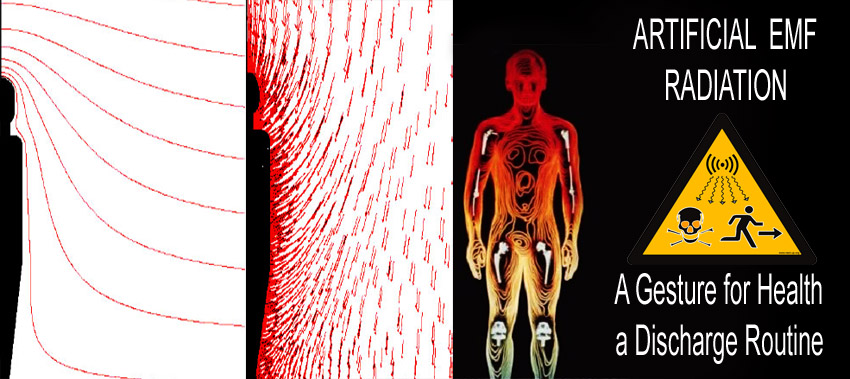The radiation from RF-EMF can cause damaged DNA, heat to the tissues and even disrupt the blood-brain barrier. These effects are real and ARPANSA is actively engaged with the EHS group, the medical experts as well as researchers. The agency will continue to review research on the health effects caused by EMF radiation.
RF-EMF damages DNA
Exposure to man-made electromagnetic fields (EMFs) is associated with DNA damage and other negative health adverse effects. EMFs can alter intracellular ionic concentrations, which are crucial to maintain the electrochemical balance of cells. In turn, this can alter the balance of cell metabolism, resulting to DNA damage. Additionally, exposure to EMFs is also associated with the production of free radicals as well as reactive oxygen species (ROS).
Exposure to RF-EMF radiation has been associated with changes in the male germ cell's development. This results in the differentiation of the germ cell into spermatozoa as well functioning maturation when the spermatozoa travel through the epididymis. To study the effect of RF-EMF exposure on male germ cells, a specially-built waveguide device was developed to expose unrestrained mice to RF-EME at 2.2 W/kg.
In a recent study researchers found that exposure to RF-EME caused oxidative DNA damage in spermatozoa. Sperm DNA fragmentation increased by 18% after a week of treatment, and by 23% after five weeks. Furthermore, DNA damage in mitochondria was observed by measuring the level of a biomarker, 8-hydroxy-2-deoxyguanosine (8-OH-dG).
Despite emf radiation symptoms , RF-EMF radiation is not yet considered to be a carcinogen. However, numerous studies have revealed that RF-EMF exposure can impair DNA health in variety of cell lines. In one such study researchers were exposed Vero cell lines to EMF of 100 Hz for about 45 minutes. They evaluated DNA damage within 48 hours of exposure to determine if the exposure affected DNA integrity.
https://felonyquiver7.bravejournal.net/post/2023/03/29/Wellness-Effects-of-EMF-Radiation3 of RF-EMF on tissue heating
While the effects of RF-EMF are usually thought to have thermal origins, a few studies have shown that non-thermal influences are also present. These factors could be responsible for some of the unsolved issues in the epidemiological study of EMF hypersensitivity. This is why it is crucial to look at the non-thermal aspects when conducting systematic reviews.
Effects that are not thermal from the RF-EMF can be mediated by the cell membrane. emf radiation is an area of research that has been thoroughly studied. Particularly, the electrochemical behavior of cell membranes has been investigated. It is believed that energy from RF-EMF higher than 1 MHz is transmitted into the tissues through dielectric dissipation and ionic discharge. Previous theoretical analyses indicated that the energy that is transferred to tissues could be up to 200 kV/m.
The electrical properties of tissues are regulated by the composition and distribution of water molecules, ions, and other molecules in the body. This determines how well absorbed EMR RF is by various tissues. Tissues with higher conductivity tend to absorb more field and cause more of an effect. This is the reason the degree of heating in tissues doesn't increase continuously from outside to inside however, it is more prevalent in hot spots. Bone and fatty tissue are less susceptible to heating by RF than other tissues because they are low in water content.
The depth of the field's penetration depends on the frequency and strength of the field. Muscle tissue absorbs more field radiation than most tissues and transforms it into heat more efficiently. Typically the depth of penetration for RF EMF is determined in millimeters (mm). The greater the frequency, the more shallow the penetration.

RF-EMF causes blood-brain barrier disruption
Researchers have discovered that RF-EMF can alter the blood-brain-barrier which can alter sleep patterns and neurotransmitter levels. Furthermore the impacts that EMF affect brain function are linked to neurodegenerative disorders. For instance, EMF from mobile phones can alter electroencephalogram activity as well as sleep patterns, as well as the activity of nitric oxide and xanthin oxide.
Researchers at the Vienna University have studied the effects of exposure to RF-EMF in brain cells. They also studied how ELF EMF on the nervous system. Although the cellular mechanisms that are involved aren't fully understood but there is a clear connection between exposure to ELF-EMF and depletion of myelin. This relationship might account for the electro-hypersensitivity symptoms of electro-hypersensitivity. However, there are known methods to regenerate myelin within the brain.
Researchers have found that exposure to frequencies of 900 Mhz EMF enhanced the permeability of the BBB and caused an increase in signs of neuronal damage in rats. They also observed increased extravasation of neuronal albumin. Further, they found the following: after about 30 min of exposure to 900 MHz, 99mTc-MIBI increased its permeation in the cortex. However, this effect did not occur with Evans blue-based injections.
Despite these findings, RF EMF has no clear mechanism to disrupt the BBB. Research suggests that EMF exposure may increase erythrocyte cell membrane permeability, which may alter the BBB and enhance calcium ion efflux. Moreover, the presence of a 99mTc-MIBI radiotracer within the brain is also associated with increasing the permeability of the BBB.
